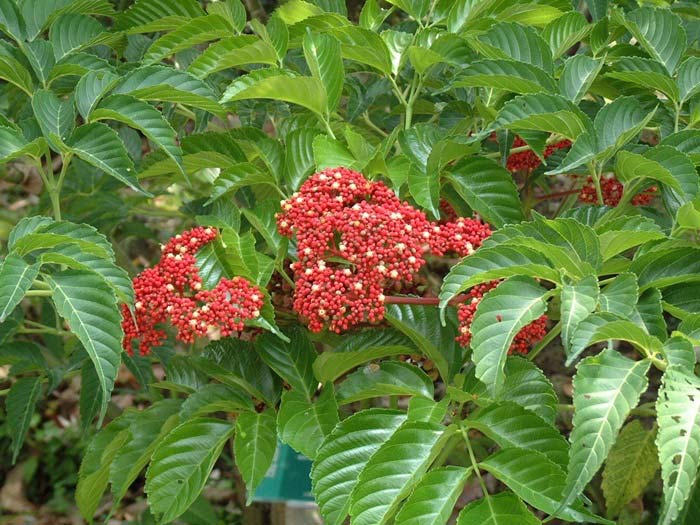Leea guineensis
The Manila leea is a striking evergreen shrub or small tree that thrives under the tropical sun of southeastern Taiwan. It favors warm, humid, and sunny environments and is commonly found in low-elevation secondary forests and coastal woodlands. Its brilliant red inflorescences resemble blazing flames, earning it the Chinese name “fire tree.”
The most distinctive feature of the Manila leea is its large, multi-branched inflorescence, densely covered with clusters of small, vivid red flowers. When viewed from afar, the entire tree appears to glow with a crimson hue. The main flowering period occurs from late spring to early summer, and the blooming pattern is quite unique—flowers on a single inflorescence do not open all at once but bloom gradually over time. As a result, one can often see flower buds, fully opened red blossoms, and developing green fruits coexisting on the same tree. This simultaneous display of flowers and fruits creates a lively and captivating scene that attracts both casual visitors and plant enthusiasts alike.
The mature fruits of the Manila leea are small, round berries that turn from green to dark purple as they ripen. Rich in water and nutrients, these fruits serve as an important food source for many bird species. As birds feed on them, they help disperse the seeds across broader areas, facilitating the natural spread of the species. This mutually beneficial relationship between plants and animals is a classic example of ecological interdependence.
The Manila leea is highly adaptable to its environment. Although it grows best in well-drained sandy loam soils, it can also thrive under ordinary soil conditions. Its tolerance to drought and saline winds enables it to survive in relatively harsh coastal habitats. Because of its vibrant color and long blooming period, the Manila leea is occasionally planted in parks, gardens, and green spaces, where its fiery blossoms bring a vivid touch of tropical charm to urban landscapes.

